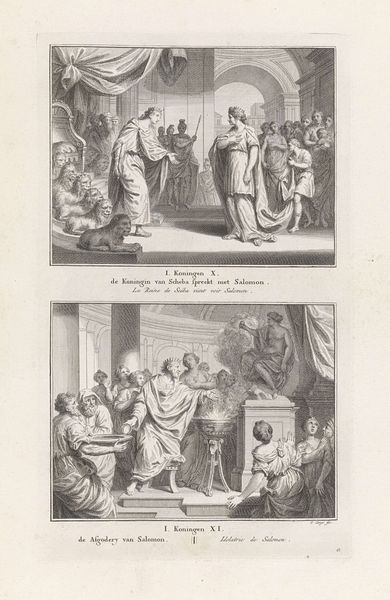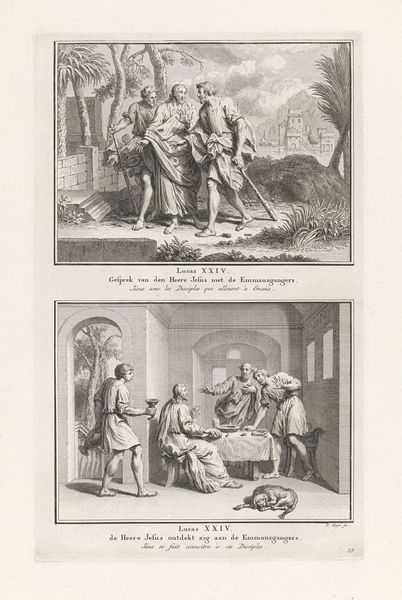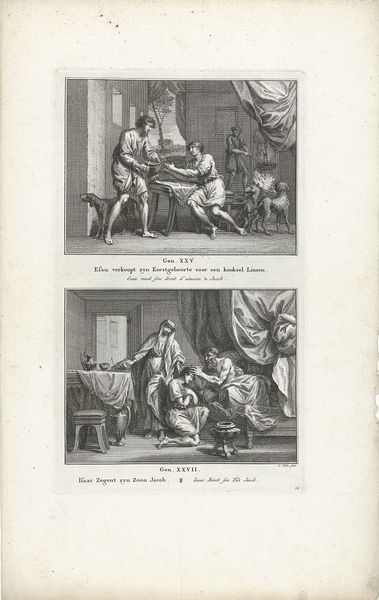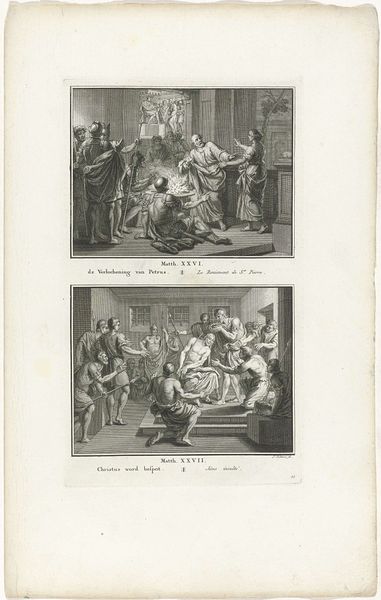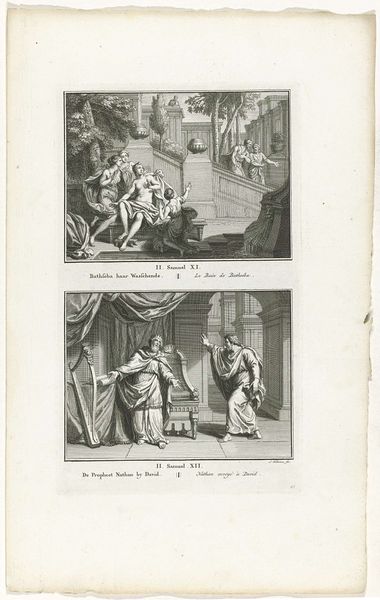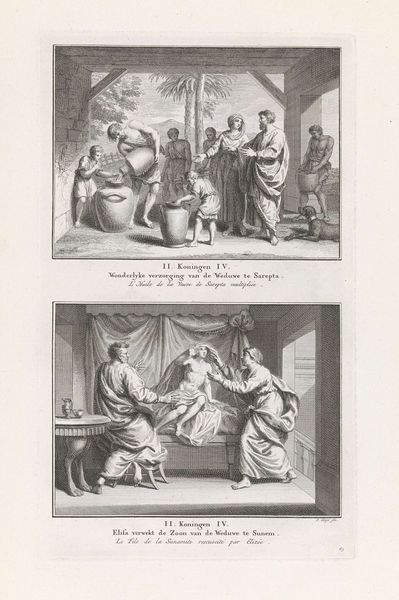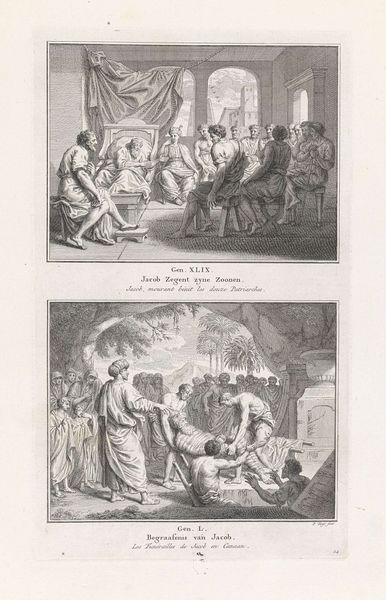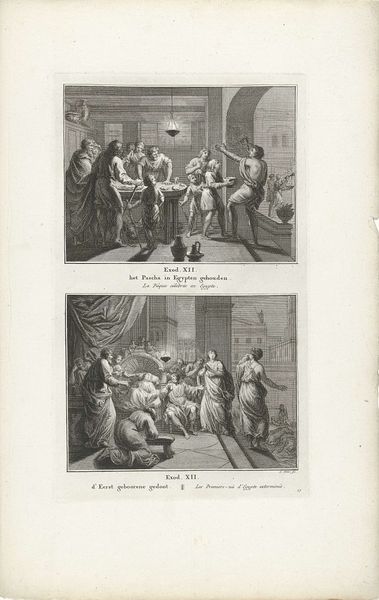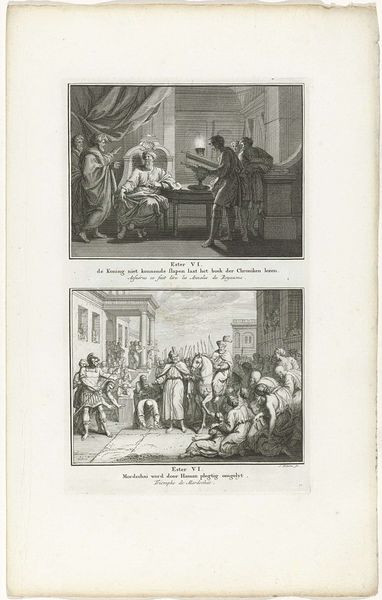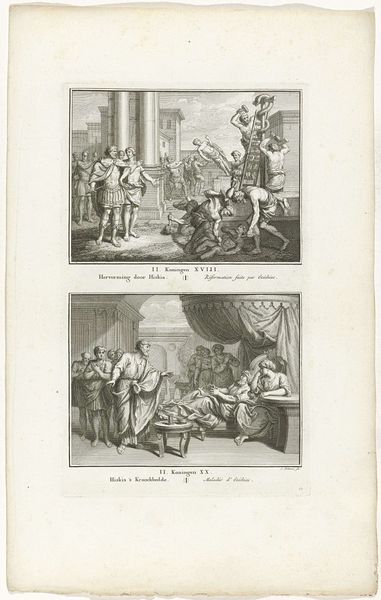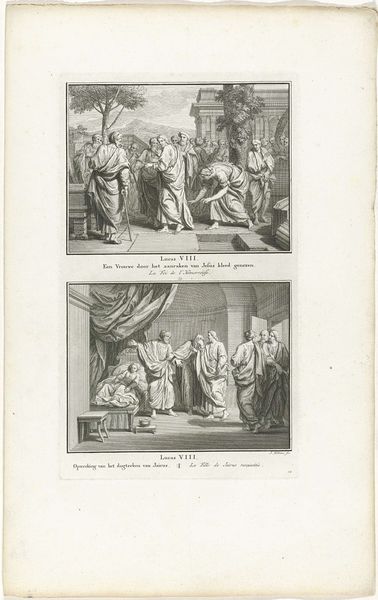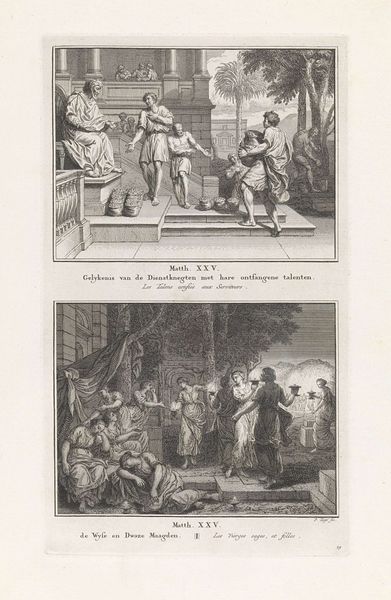
Christus in het huis van Marta en Maria / Christus en de overspelige vrouw 1716 - 1791
0:00
0:00
print, engraving
#
narrative-art
#
baroque
# print
#
figuration
#
history-painting
#
engraving
Dimensions: height 319 mm, width 189 mm
Copyright: Rijks Museum: Open Domain
Editor: This print by Pieter Tanjé, made sometime between 1716 and 1791, pairs two biblical scenes: "Christ in the House of Martha and Mary" and "Christ and the Adulterous Woman". The composition feels very staged and deliberate. How do you interpret this work? Curator: Well, prints like this served a crucial purpose in disseminating biblical narratives and moral lessons to a broader audience. They were often circulated as part of larger illustrated Bibles or devotional books. Tanjé’s baroque style adds drama, but I’m curious, considering the pairing of these two scenes. What commentary do you think it offers? Editor: Maybe something about societal roles and forgiveness? The top scene is domestic, while the bottom one involves public judgment. Was there a strong socio-political discourse around these themes during that time? Curator: Absolutely. The 18th century saw shifts in views on women's roles and public morality. These prints, displayed in homes or public spaces, reinforced specific moral codes, but also potentially sparked debate. The positioning of the stories in this work encourages us to examine what kind of cultural statements it may be trying to deliver to the masses, especially concerning morality and social behaviour. Editor: It’s interesting to think about this as a conversation starter. I appreciate the deeper context on how art was really a form of political and social communication in everyday life. Curator: Indeed. Studying prints like this really underlines how art has always played a part in the public arena. Thank you, a perspective I was not fully seeing earlier on!
Comments
No comments
Be the first to comment and join the conversation on the ultimate creative platform.
